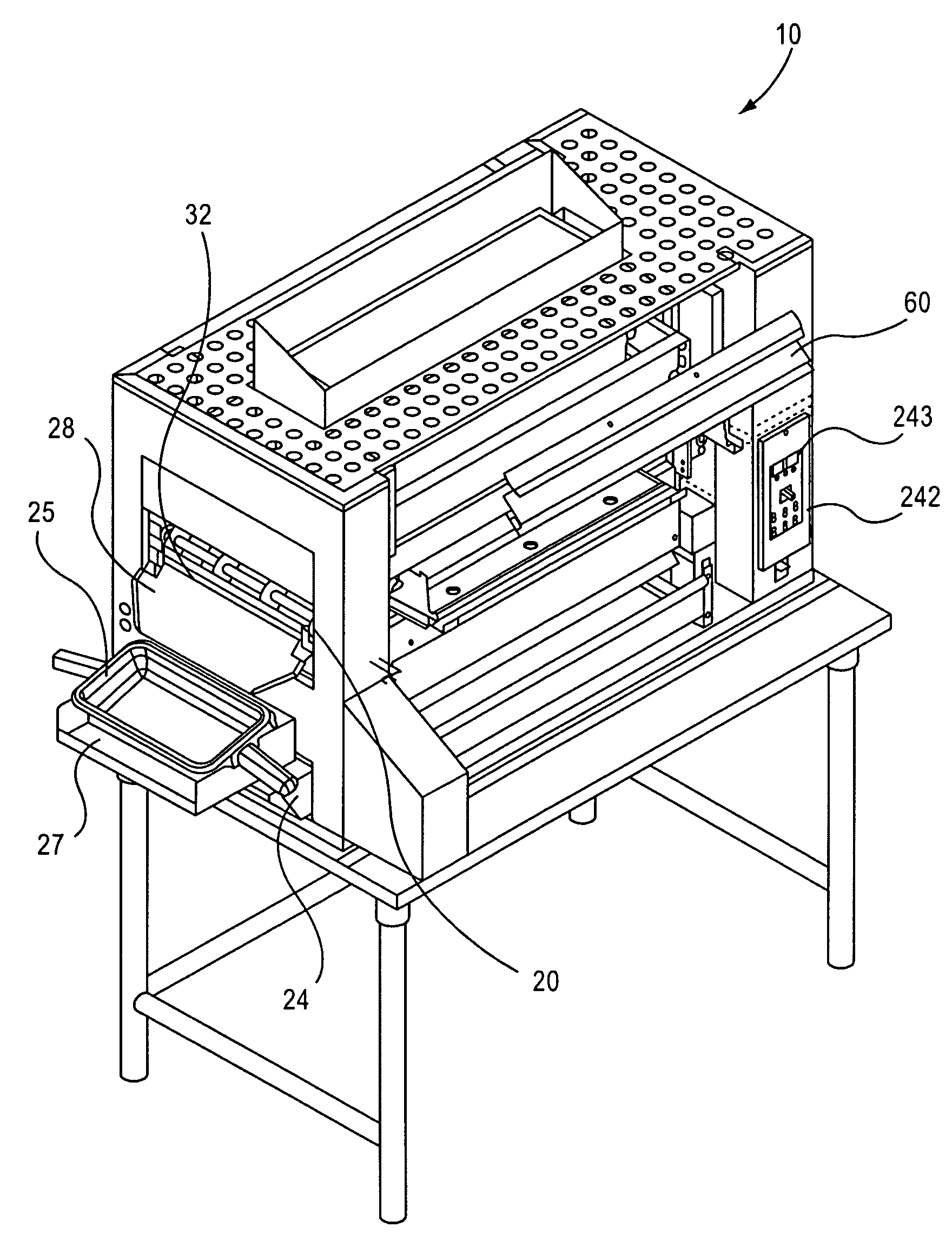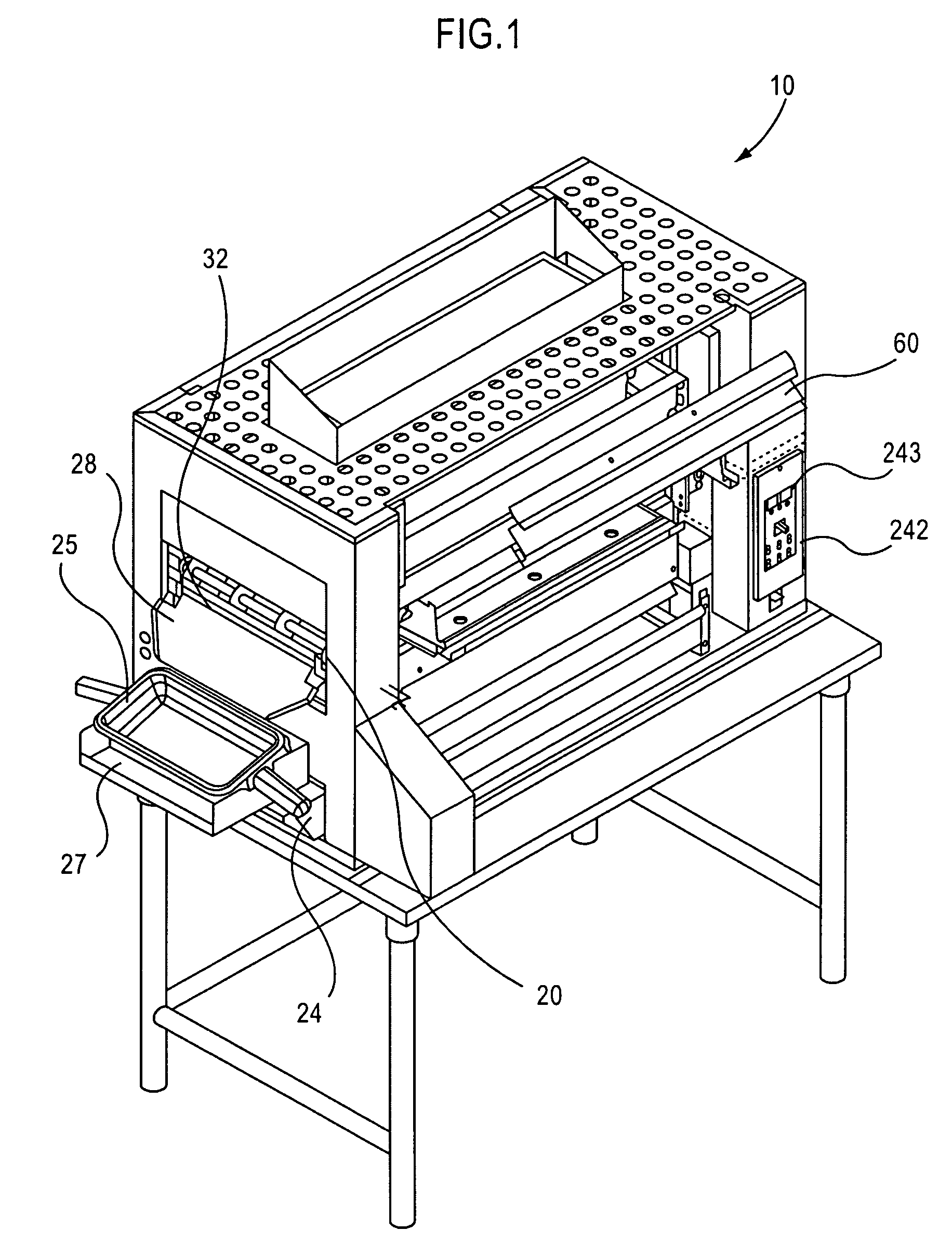Automatic broiler for variable batch cooking
a technology of automatic cooking and broiler, which is applied in the direction of lighting, heating apparatus, instruments, etc., can solve the problems of inability to quickly and efficiently change the cooking profile, waste of thermal energy, and inability to quickly and efficiently change the thermal output of the heat source, so as to increase the operating and thermal efficiency, quick and automatic adjustment of cooking
- Summary
- Abstract
- Description
- Claims
- Application Information
AI Technical Summary
Benefits of technology
Problems solved by technology
Method used
Image
Examples
Embodiment Construction
[0045]Turning now more particularly to the drawings, the automatic broiler of the present invention has widespread application in the fast-food and quick serve services industry. FIGS. 1 through 13, and 15, illustrate one embodiment of the present invention.
[0046]As seen in FIG. 1, automatic broiler 10 generally comprises door / loader assembly 60, food holding pan 25, discharge slide 28, control display 243 and control keypad 242. The same view is seen in FIG. 2, with the addition of discharge slide hood 29.
[0047]Turning now to FIGS. 3 and 4, a chassis 20 is shown supporting a conveyorized cooking surface 22. A lower heat source 46 positioned below the conveyorized cooking surface 22 and an upper heat source 146 positioned above the conveyorized cooking surface 22. A discharge slide 28 is adjacent and below the upper surface 23 of the conveyorized cooking surface 22 to receive food products discharged from the conveyorized cooking surface 22 and directs such food products to holding ...
PUM
 Login to View More
Login to View More Abstract
Description
Claims
Application Information
 Login to View More
Login to View More - R&D
- Intellectual Property
- Life Sciences
- Materials
- Tech Scout
- Unparalleled Data Quality
- Higher Quality Content
- 60% Fewer Hallucinations
Browse by: Latest US Patents, China's latest patents, Technical Efficacy Thesaurus, Application Domain, Technology Topic, Popular Technical Reports.
© 2025 PatSnap. All rights reserved.Legal|Privacy policy|Modern Slavery Act Transparency Statement|Sitemap|About US| Contact US: help@patsnap.com



